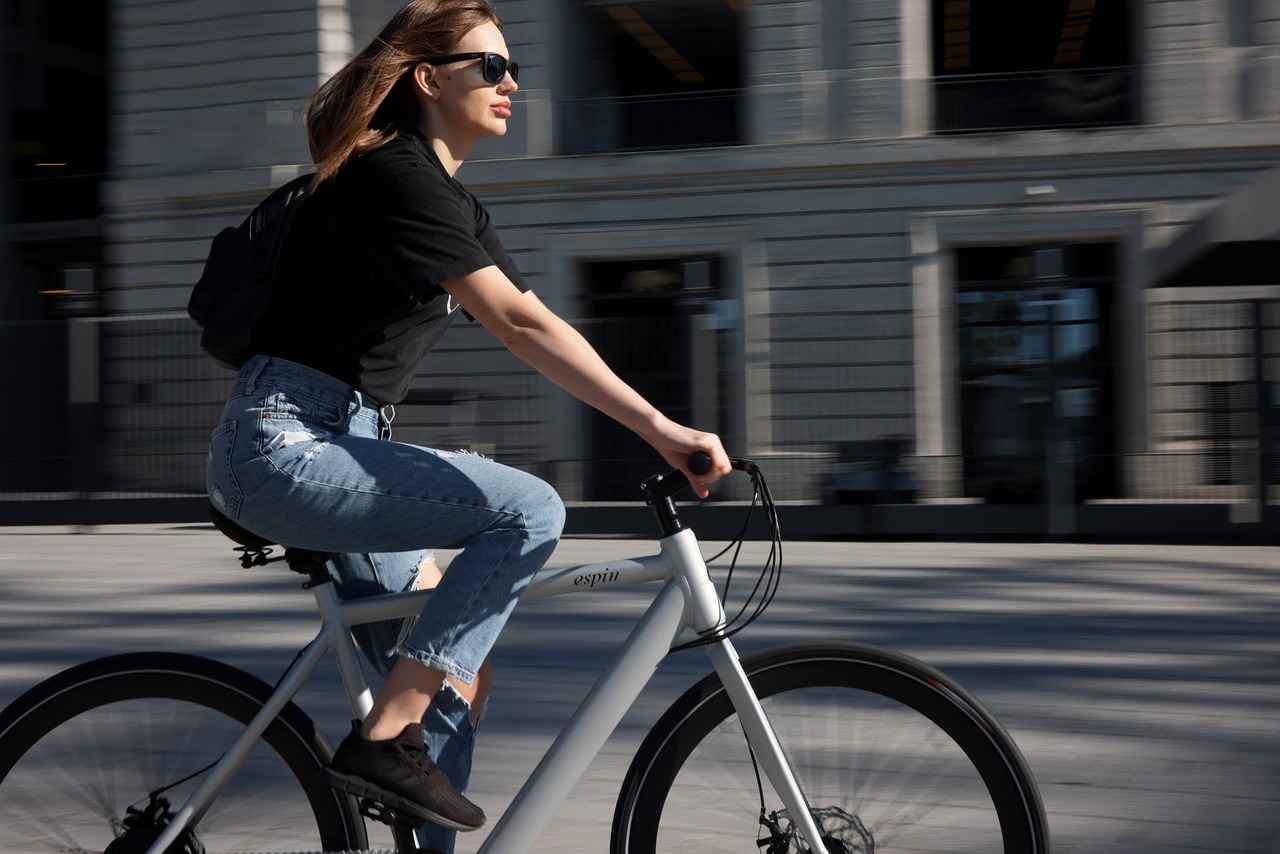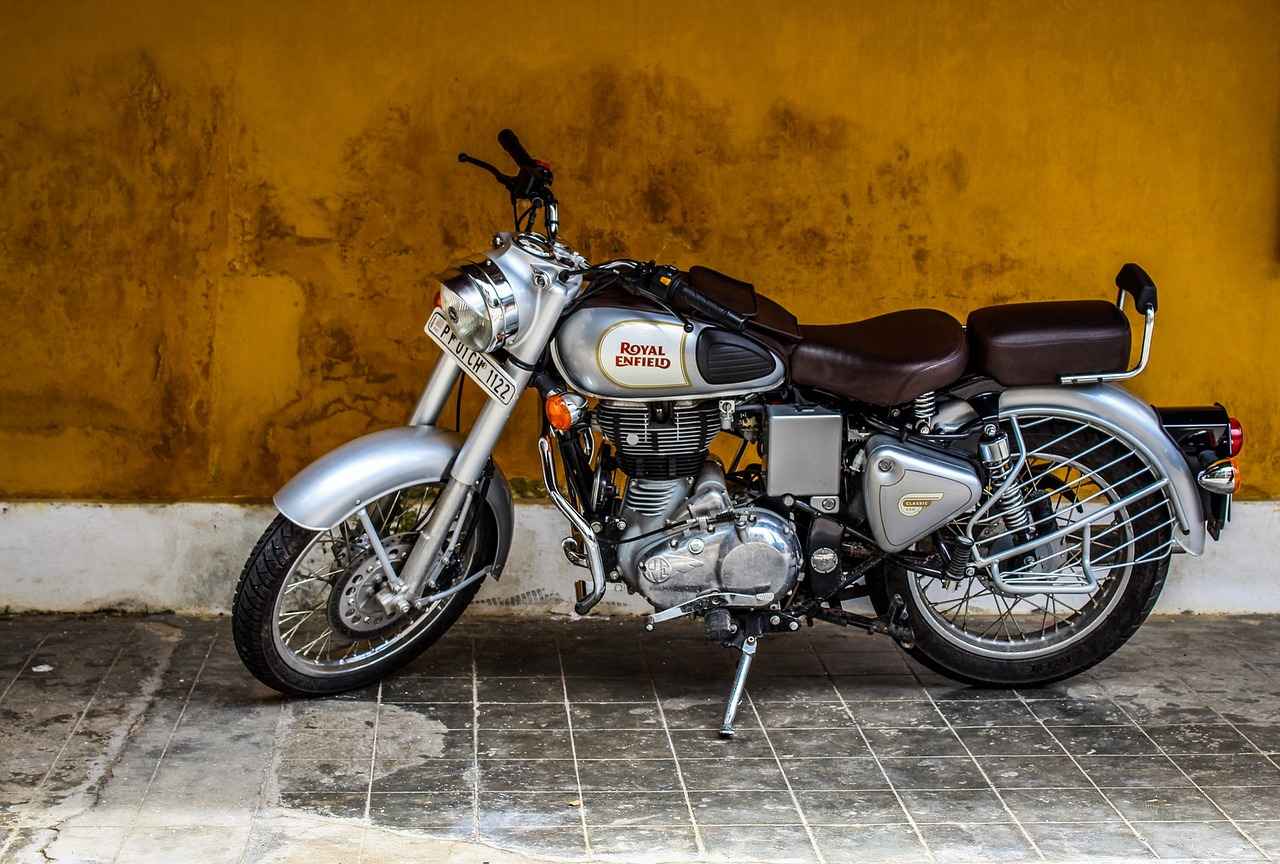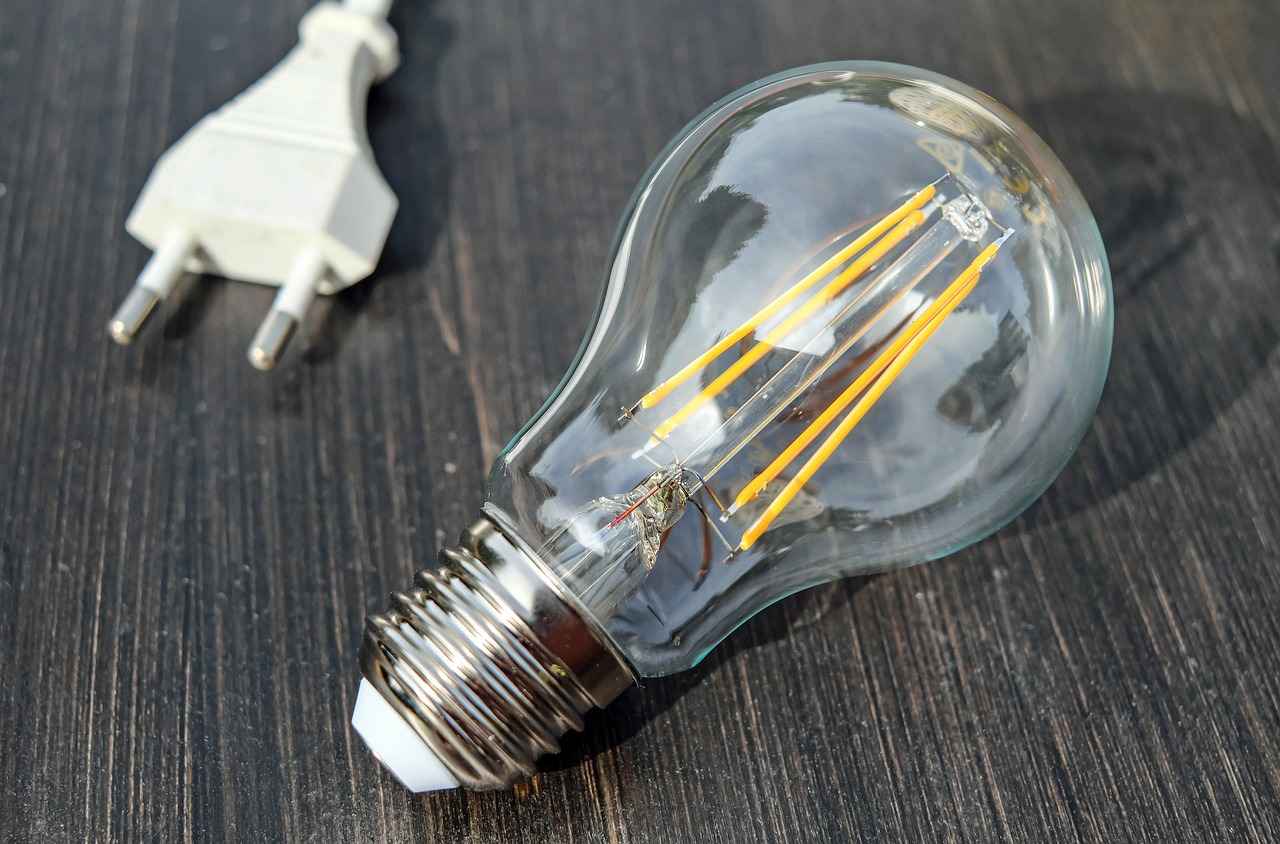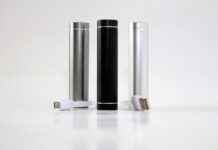This article delves into effective methods to boost the speed and range of your electric bike. Whether you’re a casual rider or a dedicated enthusiast, these insights will help you achieve optimal performance on the road.
1. Understanding Electric Bike Components
A solid understanding of your electric bike’s components is essential for making informed upgrades. Key parts include the battery, motor, and controller, each playing a crucial role in overall performance.
2. Choosing the Right Battery
Selecting a high-capacity battery can greatly enhance your bike’s range. Consider factors such as battery type, capacity, and compatibility with your bike model.
- Lithium-Ion vs. Lead-Acid Batteries: Lithium-ion batteries are lighter and more efficient, while lead-acid batteries are cheaper but heavier.
- Longevity and Maintenance: Lithium-ion batteries typically last longer and require less maintenance.
- Cost Considerations: Evaluate the upfront costs versus long-term savings to determine the best fit for your budget.
3. Upgrading the Motor for Enhanced Speed
Upgrading to a more powerful motor can significantly increase your bike’s speed. Consider the differences between hub motors and mid-drive motors to find the best option for your riding style.
- Motor Wattage Explained: Higher wattage generally results in better speed and acceleration.
4. Improving Aerodynamics for Increased Speed
Enhancing your bike’s aerodynamics can lead to better speed and efficiency. Focus on lightweight materials and streamlined accessories to reduce drag.
5. Upgrading Tires for Better Performance
The right tires can make a significant difference in speed and range. Maintain optimal tire pressure and choose the appropriate tread pattern based on your riding conditions.
6. Enhancing Your Bike’s Electronics
Upgrading electronic components, such as the controller and display unit, can optimize performance. A quality display unit provides real-time data on speed and battery life.
7. Regular Maintenance for Optimal Performance
Regular maintenance is crucial for ensuring your electric bike operates at peak performance. Clean and lubricate moving parts, and check electrical connections to prevent issues.
8. Conclusion: Making the Most of Your Upgrades
By following these guidelines, you can significantly enhance your electric bike’s speed and range, leading to a more enjoyable and efficient riding experience.

1. Understanding Electric Bike Components
Understanding the components of your electric bike is essential for maximizing its performance and making informed upgrade decisions. Each part plays a specific role in how your bike operates, affecting everything from speed to battery life. In this section, we will break down the key components of an electric bike, helping you understand their functions and how they contribute to overall performance.
- Frame: The frame is the bike’s backbone, providing structure and support. A lightweight yet sturdy frame can enhance speed and handling.
- Motor: The motor is the heart of your electric bike, providing the necessary power to propel you forward. Understanding the type and wattage of your motor can help you choose upgrades that enhance speed and efficiency.
- Battery: The battery supplies energy to the motor. Knowing the different types of batteries and their capacities will guide you in selecting a battery that meets your range and performance needs.
- Controller: The controller manages the power delivery from the battery to the motor. An upgraded controller can improve responsiveness and efficiency, allowing for smoother acceleration.
- Brakes: Safety is paramount, and high-quality brakes are essential for effective stopping power. Upgrading to hydraulic brakes can enhance performance and safety.
- Tires: The right tires can significantly impact traction, speed, and comfort. Consider the terrain and riding conditions when selecting tires for your bike.
- Display Unit: A display unit provides real-time information about speed, distance traveled, and battery life. An upgraded display can enhance your riding experience by keeping you informed.
By understanding these components, you can make informed decisions when it comes to upgrading your electric bike. Each upgrade can contribute to improved performance, making your riding experience more enjoyable. Always consider how each component interacts with others to achieve the best results.

2. Choosing the Right Battery
Choosing the Right Battery is a crucial step in optimizing the performance of your electric bike. A high-capacity battery not only extends your bike’s range but also enhances overall efficiency. In this section, we will explore various battery types, their capacities, and provide essential tips to help you make an informed decision tailored to your riding needs.
When selecting a battery, consider the following factors:
- Battery Type: The most common types are lithium-ion and lead-acid batteries. Lithium-ion batteries are lightweight and have a higher energy density, making them the preferred choice for modern electric bikes.
- Capacity: Measured in amp-hours (Ah), battery capacity determines how long your bike can run on a single charge. A higher Ah rating means a longer range, so assess your typical riding distance to choose appropriately.
- Voltage: Most electric bikes operate on a 36V or 48V system. Ensure that the battery voltage matches your bike’s specifications to avoid compatibility issues.
- Weight: The weight of the battery affects your bike’s overall performance. A lighter battery can improve handling and speed, so consider weight alongside capacity.
Tips for Choosing the Best Battery:
- Evaluate Your Riding Style: If you frequently ride long distances or tackle steep hills, opt for a high-capacity lithium-ion battery.
- Research Brands: Choose reputable brands known for quality and performance. Look for reviews and testimonials to gauge reliability.
- Check Warranty: A good warranty can provide peace of mind. Ensure the battery comes with a solid warranty that covers potential defects.
In conclusion, selecting the right battery is essential for maximizing your electric bike’s performance and range. By understanding the various types, capacities, and practical tips, you can make a well-informed choice that suits your riding needs.
2.1. Lithium-Ion vs. Lead-Acid Batteries
When it comes to upgrading your electric bike, one of the most critical decisions you’ll face is choosing the right battery. This section provides a comprehensive comparison of lithium-ion and lead-acid batteries, highlighting their respective advantages and disadvantages to help you make an informed choice.
| Feature | Lithium-Ion Batteries | Lead-Acid Batteries |
|---|---|---|
| Weight | Lightweight and compact, making them easier to handle. | Heavier, which can affect bike handling and performance. |
| Energy Density | High energy density, allowing for longer ranges. | Lower energy density, resulting in shorter ranges. |
| Lifespan | Lasts 2-3 times longer than lead-acid batteries. | Typically lasts 1-2 years with proper maintenance. |
| Charging Time | Faster charging times, often within a few hours. | Longer charging times, usually taking up to 12 hours. |
| Cost | Higher initial cost, but better long-term investment. | Lower upfront cost, but may incur higher replacement costs over time. |
Advantages of Lithium-Ion Batteries:
- Efficiency: Lithium-ion batteries are highly efficient, with minimal energy loss during charging and discharging.
- Maintenance: They require little to no maintenance, unlike lead-acid batteries that need regular checks.
- Environmentally Friendly: Lithium-ion batteries are generally more environmentally friendly, with less toxic material.
Disadvantages of Lithium-Ion Batteries:
- Cost: The initial investment is significantly higher compared to lead-acid batteries.
- Temperature Sensitivity: Performance can degrade in extreme temperatures.
Advantages of Lead-Acid Batteries:
- Cost-Effective: They are cheaper upfront, making them an attractive option for budget-conscious users.
- Robustness: Lead-acid batteries are more robust in harsh conditions.
Disadvantages of Lead-Acid Batteries:
- Weight: Heavier than lithium-ion, which can affect bike performance.
- Shorter Lifespan: They need to be replaced more frequently, leading to higher long-term costs.
In conclusion, choosing between lithium-ion and lead-acid batteries for your electric bike upgrade involves weighing the pros and cons of each type. While lithium-ion batteries offer superior performance and longevity, lead-acid batteries may be suitable for those on a tighter budget. Consider your riding needs and preferences to make the best decision for your electric bike.
2.1.1. Longevity and Maintenance
Longevity and Maintenance
When considering upgrades for your electric bike, understanding the longevity and maintenance requirements of different battery types is essential. Each battery type offers unique benefits and drawbacks, which can significantly influence your bike’s performance and reliability over time.
For instance, lithium-ion batteries are renowned for their long lifespan, often exceeding 500 charge cycles. This means they can last for several years with proper care. In contrast, lead-acid batteries typically have a shorter lifespan, averaging around 200-300 cycles. While lead-acid batteries may be cheaper initially, their shorter lifespan can lead to higher long-term costs.
Maintenance practices also vary between these battery types. Lithium-ion batteries require minimal maintenance, primarily focusing on keeping the terminals clean and ensuring they are charged properly to avoid over-discharge. On the other hand, lead-acid batteries necessitate regular checks on electrolyte levels and may require periodic equalization charging to maintain performance.
| Battery Type | Lifespan (Charge Cycles) | Maintenance Needs |
|---|---|---|
| Lithium-Ion | 500+ | Low |
| Lead-Acid | 200-300 | High |
Moreover, it is crucial to consider the environmental impact of battery disposal. Lithium-ion batteries are generally more environmentally friendly, as they can be recycled effectively. In contrast, lead-acid batteries pose significant environmental hazards if not disposed of properly.
In summary, selecting the right battery type involves weighing factors such as longevity, maintenance requirements, and environmental impact. By understanding these aspects, you can make an informed decision that ensures your electric bike performs optimally for years to come.
2.1.2. Cost Considerations
Cost Considerations are a critical factor when selecting the right battery for your electric bike. In this section, we will delve into the initial investment required for different battery types and how that compares with long-term savings derived from their use.
When evaluating battery options, it is essential to consider both the upfront costs and the lifetime expenses. For instance, while lithium-ion batteries typically have a higher initial price, they also offer greater longevity and efficiency compared to their lead-acid counterparts. This can lead to substantial savings over time due to fewer replacements and lower maintenance costs.
| Battery Type | Initial Cost | Average Lifespan | Maintenance Costs |
|---|---|---|---|
| Lithium-Ion | $500 – $800 | 5-7 years | Low |
| Lead-Acid | $200 – $400 | 2-4 years | Moderate |
In addition to the initial purchase price, consider the energy efficiency of each battery type. Lithium-ion batteries generally have a higher energy density, which means they can store more energy in a smaller space, leading to greater range and fewer charging cycles. This efficiency translates to reduced electricity costs over time.
Furthermore, the environmental impact should not be overlooked. While lithium-ion batteries are often seen as more sustainable due to their recyclability, lead-acid batteries can pose disposal challenges. This factor may influence long-term savings as environmental regulations become stricter.
In conclusion, while the initial investment for lithium-ion batteries is higher, their long-term savings in terms of lifespan, maintenance, and energy efficiency make them a cost-effective choice for electric bike enthusiasts.
2.2. Battery Placement and Mounting
Battery Placement and Mounting is a critical aspect of enhancing the performance of your electric bike. Proper placement of your upgraded battery can significantly improve weight distribution and balance, which in turn impacts your bike’s handling and overall performance. When considering the positioning of your battery, several factors come into play that can optimize your riding experience.
Firstly, weight distribution is essential for maintaining stability and control. An evenly distributed weight allows for better maneuverability, especially during sharp turns or when navigating uneven terrain. If your battery is mounted too high or too far back, it can lead to a front-heavy bike, making it difficult to steer and control.
Secondly, the mounting location of the battery should be chosen based on accessibility. A battery that is easy to reach allows for quick removal and replacement, which is particularly useful during long rides where charging may be necessary. Consider mounting the battery in a location that does not obstruct other components, such as the seat or handlebars.
In addition, the mounting system itself should be robust and secure. A well-designed mounting system will protect the battery from vibrations and shocks, which can lead to damage over time. Ensure that the battery is tightly secured to prevent any movement while riding, as this can also affect the bike’s balance.
Lastly, consider the aesthetic aspect of battery placement. A clean and streamlined look not only enhances the visual appeal of your electric bike but can also contribute to improved aerodynamics. A battery that is integrated into the frame can reduce drag, allowing for better speed and efficiency.
In conclusion, the proper placement and mounting of your upgraded battery are vital for enhancing your bike’s performance. By focusing on weight distribution, accessibility, mounting security, and aesthetics, you can significantly improve your riding experience. Make sure to evaluate these factors carefully when upgrading your electric bike.

3. Upgrading the Motor for Enhanced Speed
Upgrading your electric bike’s motor is one of the most effective ways to enhance its speed and overall performance. A more powerful motor can dramatically increase your bike’s acceleration, making it easier to tackle steep hills and maintain higher speeds on flat terrain. In this section, we will explore various motor types, their specifications, and how they can influence your riding experience.
There are primarily two types of motors used in electric bikes: hub motors and mid-drive motors. Each type has its own unique advantages and is suited for different riding styles.
- Hub Motors: Located in the wheel hub, these motors are typically easier to install and require less maintenance. They excel in providing a smooth ride and are ideal for city commuting.
- Mid-Drive Motors: Positioned at the bike’s crank, mid-drive motors offer better weight distribution and are more efficient on inclines. They allow for a more natural cycling experience and are preferred for off-road and hilly terrains.
The wattage of a motor is a critical factor in determining its performance. Generally, a higher wattage translates to greater power output, which can lead to increased speed and acceleration. For instance:
| Motor Wattage | Typical Speed | Best Use |
|---|---|---|
| 250W | 15-20 mph | City commuting |
| 500W | 20-28 mph | Mixed terrain |
| 750W+ | 28+ mph | Off-road and steep hills |
Upgrading to a more powerful motor not only enhances speed but also improves overall riding efficiency. A robust motor can help you conquer challenging terrains with ease, reducing the effort required from the rider. Additionally, a quality motor can extend the life of your battery by optimizing energy use, allowing for longer rides without sacrificing performance.
In conclusion, choosing the right motor for your electric bike is crucial for achieving optimal speed and performance. Whether you opt for a hub motor for urban riding or a mid-drive motor for off-road adventures, understanding the specifications and benefits of each type will help you make an informed decision that enhances your riding experience.
3.1. Hub Motors vs. Mid-Drive Motors
Hub Motors vs. Mid-Drive Motors are two popular types of electric bike motors, each with its own set of advantages and disadvantages. Understanding these differences is crucial for selecting the best motor that aligns with your riding style and the terrain you plan to conquer.
Hub motors are typically located in the wheel hub, either in the front or rear wheel. This design offers several benefits:
- Ease of Installation: Hub motors are generally easier to install and maintain, making them ideal for DIY enthusiasts.
- Low Maintenance: With fewer moving parts, hub motors require less maintenance compared to mid-drive systems.
- Stealthy Operation: They operate quietly, providing a more discreet riding experience.
However, hub motors also have some drawbacks:
- Weight Distribution: Hub motors can add weight to the wheels, potentially affecting handling and balance.
- Less Efficient on Hills: They may struggle on steep inclines compared to mid-drive motors.
On the other hand, mid-drive motors are located at the bike’s crank, providing a different set of benefits:
- Better Climbing Ability: Mid-drive motors excel on steep terrain, offering superior torque and efficiency.
- Weight Distribution: They provide a more balanced weight distribution, enhancing overall handling.
- Gear Optimization: Mid-drive systems allow you to use the bike’s gears, improving efficiency and range.
Nevertheless, mid-drive motors come with their own challenges:
- Higher Maintenance: They have more moving parts, which can lead to increased maintenance needs.
- Cost: Mid-drive systems are generally more expensive than hub motors.
In conclusion, the choice between hub motors and mid-drive motors largely depends on your specific needs. If you prioritize ease of use and maintenance, a hub motor may be your best bet. However, if you frequently ride in hilly areas and want better performance, a mid-drive motor could be the superior choice. Consider your riding style and terrain to make an informed decision.
3.2. Motor Wattage Explained
Motor Wattage Explained is a crucial aspect to consider when optimizing your electric bike for improved speed and acceleration. Understanding how motor wattage impacts performance will guide you in selecting the right motor for your riding needs.
Motor wattage is essentially a measure of the power output of the motor, and it directly influences both speed and acceleration. In general, a higher wattage means more power, which translates to faster speeds and quicker acceleration. For example, a 250-watt motor is typically sufficient for casual riding on flat terrain, while a 750-watt motor or higher is ideal for steep hills and more demanding conditions.
When considering motor wattage, it’s important to also factor in the bike’s overall design and intended use. A bike designed for commuting may benefit from a moderate wattage motor, ensuring a balance between speed and battery efficiency. Conversely, if you plan to tackle rugged trails or steep inclines, opting for a higher wattage motor will provide the necessary power to conquer challenging terrains.
Additionally, the relationship between motor wattage and battery capacity cannot be overlooked. A more powerful motor will consume more energy, which means that pairing it with a high-capacity battery is essential to maintain a reasonable range. This balance is crucial for enjoying longer rides without the fear of running out of power.
In conclusion, understanding motor wattage is vital for selecting the right electric bike motor. By choosing the appropriate wattage based on your riding style and needs, you can enhance your bike’s performance significantly, ensuring an exhilarating and efficient ride.

4. Improving Aerodynamics for Increased Speed
Improving Aerodynamics for Increased Speed
Enhancing your bike’s aerodynamics is crucial for achieving better speed and efficiency. By optimizing airflow around your bike, you can reduce drag and improve overall performance. In this section, we will explore several effective strategies to adjust your bike’s design and components for optimal aerodynamic benefits.
- 1. Streamlined Frame Design: Consider investing in a bike frame that features a more aerodynamic shape. Frames designed with sloped tubes and narrow profiles can significantly reduce wind resistance, allowing you to slice through the air more efficiently.
- 2. Use of Aerodynamic Accessories: Select accessories that are specifically designed to enhance aerodynamics. For instance, aero handlebars and skinny fenders can minimize drag. Additionally, consider using aero helmets that are designed to reduce wind resistance while riding.
- 3. Optimize Your Riding Position: Your posture while riding can greatly affect your aerodynamic efficiency. Adopting a lower stance can help reduce your frontal area, allowing you to cut through the wind more effectively. Practice maintaining a flat back and keeping your elbows tucked in.
- 4. Tire Selection: The tires you choose can also impact aerodynamics. Opt for narrow tires with a smooth tread pattern, as they create less rolling resistance and can improve your bike’s speed. Ensure that your tire pressure is optimal to reduce drag further.
- 5. Clothing Matters: The apparel you wear while biking can influence your aerodynamics. Choose tight-fitting clothing made from materials that reduce drag. Avoid loose clothing that can flap in the wind and create unnecessary resistance.
By implementing these strategies, you can enhance your bike’s aerodynamics, leading to improved speed and efficiency. Remember, every small adjustment can contribute to a more streamlined ride.
4.1. Choosing Lightweight Materials
Choosing Lightweight Materials for your bike frame and components is a critical strategy for enhancing performance. By utilizing materials such as carbon fiber, aluminum, and titanium, you can significantly reduce the overall weight of your bike. This reduction not only minimizes drag but also allows for increased speed and agility on the road.
When considering upgrades, it’s essential to understand how different materials perform:
- Carbon Fiber: Known for its excellent strength-to-weight ratio, carbon fiber is a popular choice for high-performance bikes. It offers superior stiffness while remaining lightweight, resulting in better acceleration and handling.
- Aluminum: This material is both lightweight and cost-effective. While it may not match the performance of carbon fiber, it provides a good balance of weight and durability, making it a solid choice for many cyclists.
- Titanium: Although more expensive, titanium is renowned for its strength and resistance to corrosion. It offers a comfortable ride due to its natural shock-absorbing properties.
In addition to the frame, consider upgrading components such as the wheels, handlebars, and seatpost. These elements can also contribute to overall weight reduction. Lighter wheels, for example, can enhance acceleration and climbing efficiency, while a lightweight seatpost can improve comfort without sacrificing performance.
Moreover, aerodynamics plays a crucial role in speed. By choosing lightweight materials that are also designed for streamlined shapes, you can further reduce drag. Accessories such as fenders and bags should also be considered; opting for lightweight versions can help maintain your bike’s performance.
In conclusion, investing in lightweight materials for your bike frame and components is an effective upgrade strategy that can lead to significant improvements in speed and handling. By understanding the benefits of various materials and making informed choices, you can enhance your cycling experience and performance.
4.2. Streamlined Accessories and Gear
Streamlined Accessories and Gear play a crucial role in enhancing the aerodynamics of your electric bike, contributing to improved speed, efficiency, and overall performance. By carefully selecting accessories designed with aerodynamics in mind, you can minimize drag and optimize your riding experience.
When it comes to fenders, choosing models that hug the bike frame closely can significantly reduce wind resistance. Look for fenders made from lightweight materials that not only protect you from splashes but also contribute to a sleeker silhouette. This streamlined design allows for a smoother airflow around the bike, enabling you to maintain higher speeds with less effort.
Another essential accessory is the bike bag. Opting for compact, aerodynamic bags can make a noticeable difference. Traditional bulky bags can create turbulence, slowing you down. Instead, consider options that attach securely to the frame or seat post and have a low profile. These bags should be designed to minimize wind resistance while providing enough space for your essentials.
Additionally, handlebar grips and seat covers that focus on aerodynamics can enhance your riding posture. Ergonomically designed grips can improve control and comfort, allowing for more efficient power transfer while riding. A streamlined seat cover can also reduce drag, especially during high-speed rides.
In conclusion, investing in streamlined accessories such as fenders and bags can significantly enhance your electric bike’s aerodynamics. By reducing drag and optimizing airflow, these accessories contribute to improved speed and efficiency, making your rides more enjoyable and effective. Remember, every small detail counts when it comes to performance upgrades, and selecting the right gear can make all the difference.

5. Upgrading Tires for Better Performance
The right tires can make a significant difference in both speed and range when it comes to your electric bike. Upgrading your tires is not just about aesthetics; it plays a crucial role in enhancing your biking experience. In this section, we will delve into the types of tires available and their specific effects on performance.
- 5.1. Understanding Tire Pressure
- 5.2. Choosing the Right Tread Pattern
- 5.3. Selecting the Right Tire Width
- 5.4. Material and Construction
Maintaining optimal tire pressure is essential for achieving peak performance. Under-inflated tires can lead to increased rolling resistance, negatively impacting speed and efficiency. Conversely, over-inflated tires may compromise grip and comfort. Regularly checking and adjusting your tire pressure ensures that your bike performs at its best.
The tread pattern of your tires can greatly influence your riding experience. For instance, tires with a smooth tread are ideal for paved surfaces, offering lower rolling resistance and higher speeds. In contrast, knobby tires provide better traction on uneven terrain, making them suitable for off-road adventures. Assessing your typical riding conditions will help you select the most effective tread pattern.
Tire width is another critical factor that affects performance. Wider tires can provide better stability and grip, especially on rough surfaces, while narrower tires are typically faster on smooth roads. Consider your riding style and the terrain to determine the best tire width for your needs.
The materials used in tire construction can also impact performance. Tires made from high-quality rubber compounds can offer better durability and traction. Additionally, lightweight tires can reduce overall bike weight, enhancing speed and efficiency. Investing in quality tires can lead to long-term benefits for your biking experience.
In conclusion, upgrading your tires is a vital step toward improving the speed and range of your electric bike. By understanding tire pressure, tread patterns, width, and materials, you can make informed choices that enhance your overall performance on the road.
5.1. Understanding Tire Pressure
Understanding Tire Pressure is essential for maximizing the performance of your electric bike. The tire pressure directly influences not only the speed but also the handling of your bike, making it a critical aspect of your riding experience.
Maintaining the proper tire pressure ensures that your bike operates efficiently. When tires are under-inflated, they create increased rolling resistance, which can hinder your speed and make pedaling more laborious. Conversely, over-inflated tires can lead to a harsh ride, reducing grip and compromising handling, especially on uneven surfaces.
Here are some key points to consider regarding tire pressure:
- Speed: Proper tire pressure allows for smoother rolling on surfaces, enabling faster speeds. A well-inflated tire reduces the energy lost to deformation, allowing you to maintain higher velocities with less effort.
- Handling: Correct pressure improves the contact patch between the tire and the road. This enhances traction, especially during turns or when navigating obstacles, leading to better control of your bike.
- Comfort: The right tire pressure can significantly affect the comfort level of your ride. Properly inflated tires absorb shocks more effectively, resulting in a smoother experience.
To achieve optimal tire pressure, always refer to the manufacturer’s specifications, usually found on the tire sidewall or in the bike’s user manual. Regularly check your tire pressure, especially before long rides, to ensure your bike performs at its best.
Conclusion: In summary, understanding and maintaining the right tire pressure is vital for enhancing both speed and handling on your electric bike. By prioritizing this aspect, you can enjoy a safer, more efficient, and more enjoyable riding experience.
5.2. Choosing the Right Tread Pattern
Choosing the Right Tread Pattern for your electric bike tires is crucial for maximizing performance based on your riding conditions. The tread pattern significantly influences grip, rolling resistance, and overall bike handling. By understanding how different tread designs interact with various surfaces, you can make an informed choice that enhances your riding experience.
When selecting a tread pattern, consider the following factors:
- Terrain Type: Different terrains require specific tread patterns. For instance, knobby tires are ideal for off-road conditions, providing superior traction on loose surfaces like dirt and gravel. In contrast, slick tires are better suited for paved roads, minimizing rolling resistance for improved speed.
- Weather Conditions: Wet or slippery conditions demand tires with deeper grooves to channel water away and prevent hydroplaning. A tread pattern designed for wet traction can enhance safety and control during rainy rides.
- Riding Style: Your riding style also influences your choice. If you prefer aggressive cornering and technical trails, opt for tires with more pronounced side knobs. For casual commuting, a smoother tread may suffice.
Additionally, the width of the tire plays a role in performance. Wider tires often provide better grip and comfort, while narrower tires can enhance speed and efficiency on smooth surfaces. It’s essential to find a balance that suits your specific needs.
To conclude, selecting the right tread pattern is not just about aesthetics; it’s a critical decision that can greatly impact your bike’s performance. By analyzing your typical riding conditions and preferences, you can choose a tire that enhances grip and reduces rolling resistance, ultimately leading to a more enjoyable and efficient ride.

6. Enhancing Your Bike’s Electronics
Enhancing Your Bike’s Electronics
Upgrading your bike’s electronic systems can significantly optimize its performance, leading to enhanced speed and efficiency. In this section, we will explore essential electronic components that can elevate your biking experience and make your rides more enjoyable.
- 6.1. Upgrading the Controller
The controller is a crucial component that manages the power delivery from the battery to the motor. By upgrading to a more advanced controller, you can improve the bike’s responsiveness, allowing for smoother acceleration and better handling. Look for controllers with customizable settings to tailor the power output to your riding style.
- 6.2. Installing a Display Unit
A high-quality display unit provides real-time data such as speed, battery life, and distance traveled. This information is vital for monitoring your performance and making informed decisions during your ride. Choose a display that is user-friendly and offers additional features like navigation and ride statistics.
- 6.3. Upgrading the Throttle
Consider upgrading to a more responsive throttle system. A high-quality throttle can offer better control over acceleration, allowing you to adjust your speed more precisely, which is particularly useful in varying terrains.
- 6.4. Integrating Smart Technology
Modern electric bikes can benefit from smart technology integration. Features such as GPS tracking, anti-theft systems, and Bluetooth connectivity can enhance your riding experience. These technologies not only improve security but also allow you to connect with your bike through mobile apps for performance monitoring.
- 6.5. Battery Management Systems
Investing in a sophisticated battery management system (BMS) can protect your battery from overcharging and overheating, prolonging its lifespan. A good BMS will also provide you with important data about battery health, ensuring you get the most out of your power source.
By focusing on these electronic upgrades, you can greatly enhance your bike’s performance, making your rides faster and more efficient. Remember, each component plays a vital role in the overall functionality of your electric bike, so choose wisely and enjoy a superior biking experience!
6.1. Upgrading the Controller
Upgrading the Controller of your electric bike is a crucial step in enhancing its overall performance. The controller is the brain of your e-bike, managing the power delivery from the battery to the motor. By upgrading this component, you can achieve significant improvements in responsiveness and efficiency, leading to a more enjoyable riding experience.
When you opt for a new controller, you are likely to experience faster acceleration and smoother power delivery. This is particularly important when navigating challenging terrains or during sudden stops. A high-quality controller can adapt quickly to your riding style, providing the necessary power when you need it most.
Moreover, an upgraded controller can enhance the overall efficiency of your electric bike. By optimizing the power management system, the controller can help extend your battery life. This means you can ride longer distances without worrying about running out of power, making it an ideal upgrade for those who enjoy long rides or commutes.
In addition to performance benefits, modern controllers often come with advanced features such as regenerative braking. This technology allows your bike to recover energy during braking, which can further improve your bike’s efficiency and range. Furthermore, many upgraded controllers offer customizable settings, allowing you to tailor your riding experience to suit your preferences.
When selecting a new controller, consider compatibility with your existing components, including the motor and battery. It’s essential to choose a controller that matches the specifications of your bike to ensure optimal performance.
In summary, upgrading the controller is an effective way to enhance your electric bike’s responsiveness and efficiency. By investing in a quality controller, you can transform your riding experience, making it more enjoyable and efficient.
6.2. Installing a Display Unit
Installing a Display Unit on Your Electric Bike is a crucial enhancement that can significantly improve your riding experience. A quality display unit offers real-time data on various performance metrics, including speed, battery life, and distance traveled. This information is essential for any rider looking to optimize their performance and ensure a smooth ride.
By having immediate access to your bike’s speed, you can make informed decisions about your riding style, whether you are commuting, exercising, or enjoying a leisurely ride. Monitoring battery life is equally important; it helps you plan your trips better, preventing unexpected power loss. Moreover, keeping track of the distance allows you to set goals and measure your progress over time.
When selecting a display unit, consider the following factors:
- Screen Size: A larger screen can provide clearer visibility, especially in bright sunlight.
- Data Readouts: Look for units that offer customizable data fields, so you can prioritize the information most relevant to you.
- Connectivity: Some advanced units can connect to smartphones or GPS devices, providing even more data and features.
- Durability: Ensure that the display is weather-resistant and built to withstand the rigors of outdoor use.
Installation is typically straightforward, often requiring basic tools. Most units come with comprehensive instructions, making it easy for even novice users to set up. Once installed, take the time to familiarize yourself with the unit’s interface and features. This will enhance your riding experience and help you make the most of your electric bike’s capabilities.
In conclusion, a quality display unit is an invaluable addition to any electric bike. It not only aids in performance monitoring but also enhances your overall riding experience by providing essential data at a glance. Investing in a good display unit can lead to more informed riding decisions and ultimately a more enjoyable journey.

7. Regular Maintenance for Optimal Performance
Regular maintenance is essential for ensuring that your electric bike operates at peak performance. By adhering to a systematic maintenance routine, you can enhance the longevity of your bike and optimize its efficiency. This section will outline essential maintenance practices to keep your electric bike in top shape.
- Cleaning Your Bike
Regularly cleaning your electric bike is crucial for preventing dirt and grime buildup. Use a soft cloth and mild detergent to clean the frame and components. Pay special attention to the chain, gears, and brakes, as these areas are most susceptible to dirt accumulation.
- Lubrication
Proper lubrication of moving parts is vital for smooth operation. Use a quality bike lubricant on the chain, derailleur, and pivot points. This will not only enhance performance but also prevent premature wear and tear.
- Battery Maintenance
Check your battery regularly for any signs of damage or corrosion. Ensure that the battery terminals are clean and free from debris. It is also important to charge the battery according to the manufacturer’s recommendations to prolong its lifespan.
- Tire Inspection
Regularly inspect your tires for wear and tear. Maintain proper tire pressure as per the manufacturer’s specifications to enhance performance and safety. Replace tires that show signs of significant wear to ensure optimal traction and handling.
- Electrical System Check
Inspect the electrical connections and wiring for any signs of damage or fraying. A well-maintained electrical system is crucial for the efficient operation of your bike’s motor and battery.
By following these maintenance practices, you can ensure that your electric bike remains reliable and performs at its best. Regular checks and care will not only improve your riding experience but also extend the lifespan of your investment.
7.1. Cleaning and Lubrication
Maintaining your electric bike is essential for ensuring its longevity and optimal performance. One of the most crucial aspects of this maintenance involves cleaning and lubrication of moving parts. By dedicating time to this practice, you can significantly reduce wear and tear on your bike, thereby enhancing its overall functionality.
Why Cleaning and Lubrication Matter
Regular cleaning helps to remove dirt, grime, and debris that can accumulate on your bike’s components. This buildup can lead to friction and corrosion, which ultimately affects performance. Lubrication, on the other hand, reduces friction between moving parts, allowing for smoother operation and less strain on the components.
| Benefits of Cleaning and Lubrication |
|---|
| 1. Prevents Wear and Tear: Regular maintenance extends the life of your bike. |
| 2. Enhances Performance: A well-lubricated bike operates more efficiently. |
| 3. Improves Safety: Clean components reduce the risk of mechanical failures. |
Steps for Proper Cleaning:
- Start by rinsing your bike with water to remove loose dirt.
- Use a soft brush and mild detergent to scrub the frame and components.
- Rinse thoroughly to ensure no soap residue remains.
- Dry your bike with a clean cloth to prevent rust.
Steps for Effective Lubrication:
- Identify the moving parts that require lubrication, such as the chain, gears, and brakes.
- Apply a suitable lubricant, ensuring even coverage without over-saturating.
- Wipe off any excess lubricant to prevent dirt attraction.
In conclusion, regular cleaning and lubrication are vital practices for any electric bike owner. By following these steps, you can ensure that your bike remains in peak condition, providing you with a safe and enjoyable riding experience.
7.2. Checking Electrical Connections
Maintaining the performance of your electric bike is essential for a seamless riding experience. One of the most critical aspects of this maintenance is regularly inspecting electrical connections. Neglecting this can lead to various performance issues that may hinder your bike’s efficiency and safety.
Electrical connections serve as the backbone of your bike’s functionality. They facilitate the flow of power between the battery, motor, and controller. Over time, these connections can become loose, corroded, or damaged, leading to intermittent power delivery and reduced performance. To ensure your upgrades function smoothly, here are some key practices to follow:
- Visual Inspection: Regularly check all visible wiring and connections for signs of wear, fraying, or corrosion. Look for any loose connectors that may need tightening.
- Clean Connections: Use a soft cloth or a specialized electrical cleaner to remove dirt and corrosion from connectors. This helps to maintain a solid electrical connection.
- Test with a Multimeter: Employ a multimeter to check for continuity in connections. This ensures that the electrical flow is uninterrupted and functioning correctly.
- Secure Loose Wires: Ensure that all wires are securely fastened to avoid any movement that could lead to disconnection or damage during rides.
- Consult a Professional: If you notice persistent issues or are unsure about performing these checks, it’s wise to consult a professional mechanic who specializes in electric bikes.
By prioritizing the inspection of electrical connections, you can prevent potential performance issues and enhance the overall longevity of your electric bike. A well-maintained electrical system not only improves efficiency but also contributes to a safer riding experience.

8. Conclusion: Making the Most of Your Upgrades
Conclusion: Making the Most of Your Upgrades
Upgrading your electric bike can lead to significant improvements in both speed and range, ultimately enhancing your riding experience. By implementing the strategies outlined in this article, you can optimize the performance of your bike and enjoy a more efficient ride.
First and foremost, understanding the key components of your electric bike is essential. Each part plays a vital role in the overall performance, and knowing how to upgrade them can make a substantial difference. For instance, choosing the right battery is crucial; a high-capacity battery not only extends your range but also improves the bike’s overall efficiency. Consider factors such as battery type and placement to ensure optimal performance.
In addition to the battery, upgrading the motor can dramatically increase your bike’s speed. Whether you opt for a hub motor or a mid-drive motor, understanding the wattage and performance characteristics will help you select the best option for your needs. Furthermore, improving the aerodynamics of your bike can enhance speed; using lightweight materials and streamlined accessories can reduce drag and increase efficiency.
Don’t overlook the importance of tire upgrades. The right tires can significantly impact your bike’s speed and range. Maintaining optimal tire pressure and selecting the appropriate tread pattern for your riding conditions can enhance grip and reduce rolling resistance.
Lastly, regular maintenance is key to keeping your electric bike running smoothly. Routine checks on electrical connections, cleaning, and lubrication of moving parts will ensure your upgrades function effectively and prolong the life of your bike.
In conclusion, by carefully considering each of these aspects and making informed upgrades, you can transform your electric bike into a high-performance machine. Enjoy the journey and the thrill of riding with your newly enhanced bike!
Frequently Asked Questions
- What are the key components to consider when upgrading my electric bike?
When upgrading your electric bike, focus on the battery, motor, tires, and electronics. Each component plays a vital role in enhancing speed and range, so understanding their functions is crucial for effective upgrades.
- How can I choose the right battery for better range?
Selecting a high-capacity lithium-ion battery is usually the best choice for extended range. Consider factors such as capacity, weight, and compatibility with your bike to ensure optimal performance.
- What type of motor should I upgrade to for increased speed?
Upgrading to a more powerful motor, such as a mid-drive motor, can significantly boost your bike’s speed. Evaluate your riding style and terrain to choose the best motor type that fits your needs.
- How does tire pressure affect my bike’s performance?
Maintaining optimal tire pressure is essential for reducing rolling resistance and improving speed. Regularly check your tire pressure to ensure you’re getting the best performance from your electric bike.
- What maintenance practices should I follow for my upgraded bike?
Regular cleaning, lubrication, and inspection of electrical connections are key maintenance practices. These steps will help ensure your upgrades function smoothly and enhance the longevity of your electric bike.













